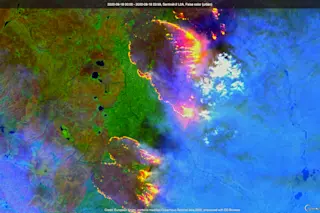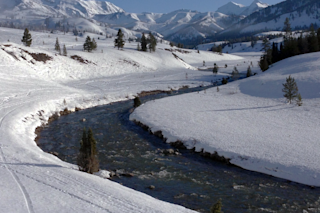The blaze captured in the false-color satellite image above is just one small part of a much bigger wildfire, which is just one among hundreds that have scorched Siberia since winter ice and snow melted in May.
Meanwhile, half a world away, a brutally hot August in the western United States has fueled vicious fires in California, as well as in my own state of Colorado. In this post, and a Part 2 to follow, I'll share some remarkable remote sensing imagery of what I think is fair to call a pandemic of wildfire.
When the Sentinel 2 satellite flew over the intense Siberian wildfire above on Aug. 18, 2020, it was torching new territory on the eastern side of a wildfire complex that was twice the size of New York City. (For a bigger, better version of the image, go here.)
The Sentinel 2 satellite captured this false-color image ...














